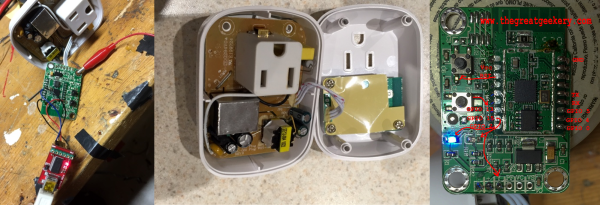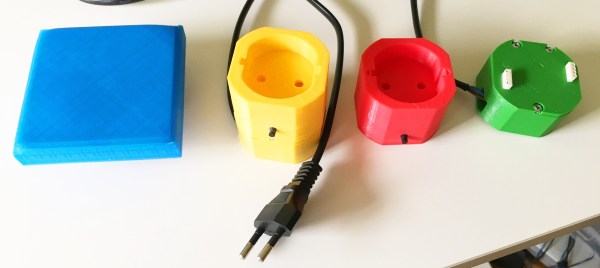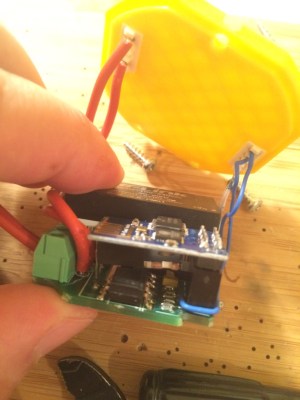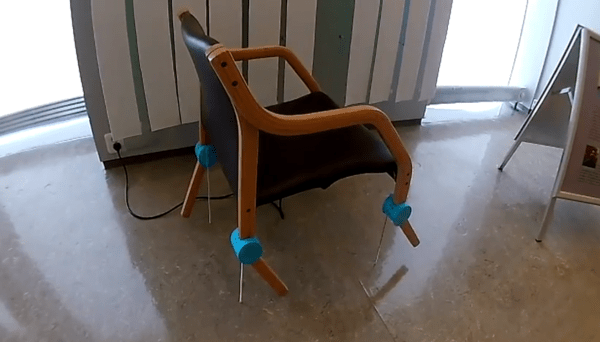There are it seems no wireless-enabled light switches available in the standard form factor of a UK light switch. At least, that was the experience of [loldavid6], when he decided he needed one. Also, none of the switches he could find were open-source, or easy to integrate with. So he set out to design his own, and the Theia IoT light switch is the result.
In adapting a standard light switch, he was anxious that his device would not depend on the position of the switch for its operation. Therefore he had to ensure that the switch became merely an input to whichever board he designed, rather than controlling the mains power. He settled upon the ESP8266 wireless-enabled microcontroller as the brains of the unit, with a relay doing the mains switching. He first considered using an LNK304 off-line switching PSU chip to derive his low voltages, but later moved to an off-the-shelf switch-mode board.
So far two prototype designs have been completed, one for each power supply option. Boards have been ordered, and he’s now in the interminable waiting period for international postage. All the KiCad and other files are available for download o the project’s hackaday.io page, so you can have a look for yourselves if you are so inclined.
You might ask why another IoT light switch might be needed. But even though they are now available and inexpensive, there is still a gap for a board that is open, and more importantly does not rely on someone else’s cloud backend. Plus, of course, this board can be used for more than lighting.
Light bulb image: Осадчая Екатерина (Own work) [CC BY-SA 4.0], via Wikimedia Commons.









 Starting with a piece of steel, [izzy] traced and cut out a 90 degree curve with an attached arm that will allow it to rotate from a central block. He then grabs a random drill bit and attaches it to a flex shaft which is secured to the leading point of the steel curve. To complete the handy setup the entire rig is bolted to a block that will clamp over the corner stock.
Starting with a piece of steel, [izzy] traced and cut out a 90 degree curve with an attached arm that will allow it to rotate from a central block. He then grabs a random drill bit and attaches it to a flex shaft which is secured to the leading point of the steel curve. To complete the handy setup the entire rig is bolted to a block that will clamp over the corner stock.
 It’s all based around a simple board. An encapsulated power supply converts the 220V offered by the Bulgarian power authorities into two rails of 3.3V and 5V respectively. The 3.3V is used for an ESP8266 whose primary concern is the control of a triac and an RGB LED. The 5V is optional if the user decides to add a shield that needs it. That’s right, your light switches will now have their own shields that decide the complexity of the device.
It’s all based around a simple board. An encapsulated power supply converts the 220V offered by the Bulgarian power authorities into two rails of 3.3V and 5V respectively. The 3.3V is used for an ESP8266 whose primary concern is the control of a triac and an RGB LED. The 5V is optional if the user decides to add a shield that needs it. That’s right, your light switches will now have their own shields that decide the complexity of the device.










